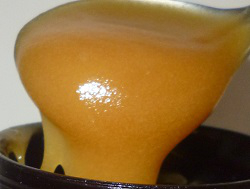
The manuka honey industry is never far from the news these days, especially with the increasing demand for high quality manuka honey from all types of industries as well as consumers alike.
Recent scandals and unfavourable press articles about consumers being swindled by fake manuka has led the New Zealand government to issue a set of interim guidelines on labelling and as a result consumers will start to see a change in labelling with a new emphasis on stating the level of methylglyoxal (MG) in the honey.
While the word sounds complicated, all consumers of manuka honey should get to know a little about it and why.
What is methylglyoxal?
Methylglyoxal (MG), although it sounds very technical, is a naturally occurring chemical compound found in genuine manuka honey, and is derived from the manuka tree. It wasn’t until 2008 that a research team at the University of Dresden in Germany discovered that MG was the element that is responsible for the antibacterial properties of manuka honey, so it is very important to know about it.
Different grading systems
Consumers who buy manuka honey will already be aware of the different labels, letters and trademarks on jars of honey such as UMF (Unique Manuka Factor), NPA (Non-peroxide Activity), and MGO (methylglyoxal). There are other descriptions too such as active, bioactive, total activity etc.
The UMF and NPA ratings are based on actually testing the honey in a laboratory to verify its antibacterial level and then comparing it to the antiseptic called phenol. For example, UMF 12+ manuka honey will have a strength equivalent to a 12% solution of phenol.
This profusion of labels and different systems has also led to consumers being confused about whether the honey they are buying has antibacterial activity or not and to what strength, and has let unscrupulous merchants take advantage of this confusion.
Methylglyoxal takes centre stage
The respected and generally acknowledged Godfather of Manuka Honey, Dr Peter Molan, recently released a paper about methylglyoxal1 and in it he states “the level of methylglyoxal present is actually a much better indicator than the NPA rating for consumers to see the relative potency of manuka honeys on sale.”
He concludes by saying that stating the level of methylglyoxal (MG) would be good for the industry and would help curb misleading labelling practices too. All that this requires is the “education of consumers to have them realise that the antibacterial potency is directly proportional to the level of methylglyoxal.”
This is already starting to happen and several producers of manuka honey are now branding their honey with the level of methylglyoxal.
References
1 The True Relationship of NPA and MG Levels, Peter Molan, New Zealand Beekeeper, April 2015
